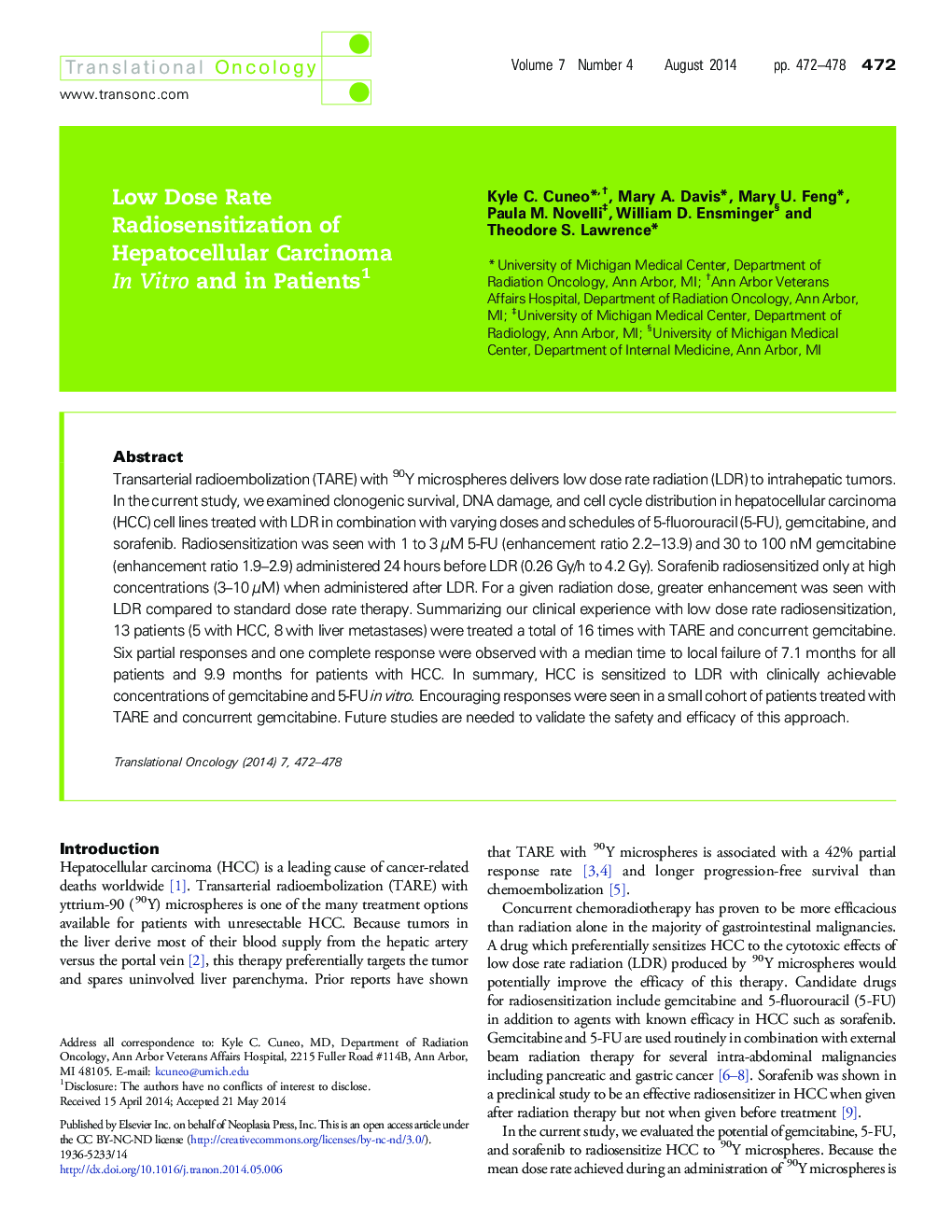| Article ID | Journal | Published Year | Pages | File Type |
|---|---|---|---|---|
| 2163645 | Translational Oncology | 2014 | 7 Pages |
Transarterial radioembolization (TARE) with 90Y microspheres delivers low dose rate radiation (LDR) to intrahepatic tumors. In the current study, we examined clonogenic survival, DNA damage, and cell cycle distribution in hepatocellular carcinoma (HCC) cell lines treated with LDR in combination with varying doses and schedules of 5-fluorouracil (5-FU), gemcitabine, and sorafenib. Radiosensitization was seen with 1 to 3 μM 5-FU (enhancement ratio 2.2–13.9) and 30 to 100 nM gemcitabine (enhancement ratio 1.9–2.9) administered 24 hours before LDR (0.26 Gy/h to 4.2 Gy). Sorafenib radiosensitized only at high concentrations (3–10 μM) when administered after LDR. For a given radiation dose, greater enhancement was seen with LDR compared to standard dose rate therapy. Summarizing our clinical experience with low dose rate radiosensitization, 13 patients (5 with HCC, 8 with liver metastases) were treated a total of 16 times with TARE and concurrent gemcitabine. Six partial responses and one complete response were observed with a median time to local failure of 7.1 months for all patients and 9.9 months for patients with HCC. In summary, HCC is sensitized to LDR with clinically achievable concentrations of gemcitabine and 5-FU in vitro. Encouraging responses were seen in a small cohort of patients treated with TARE and concurrent gemcitabine. Future studies are needed to validate the safety and efficacy of this approach.
